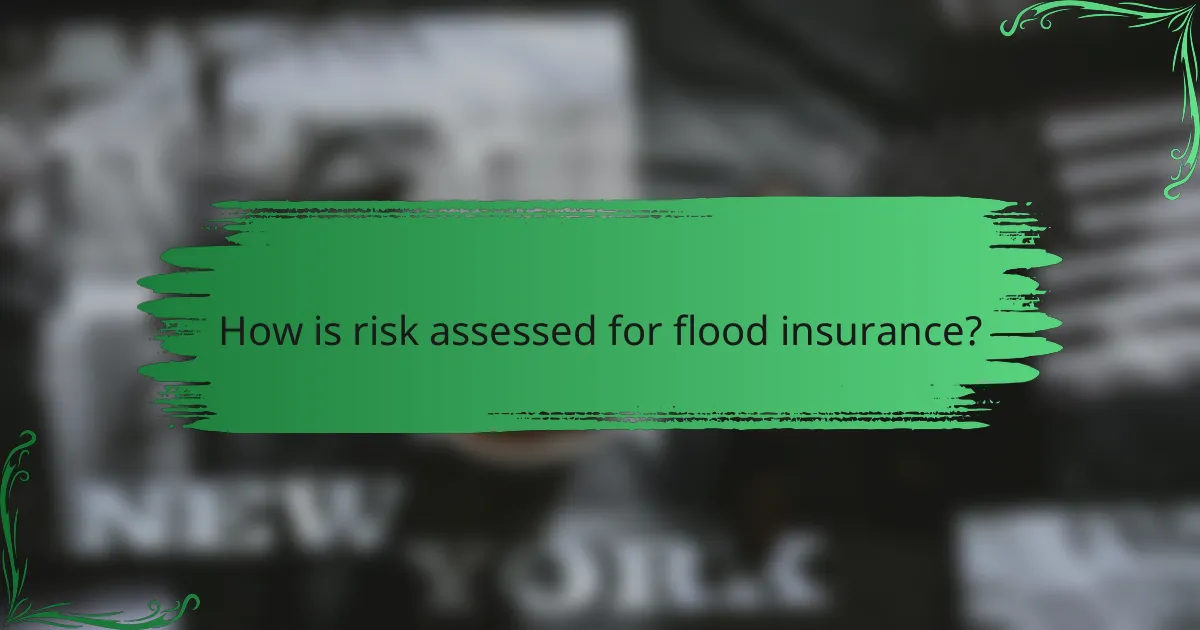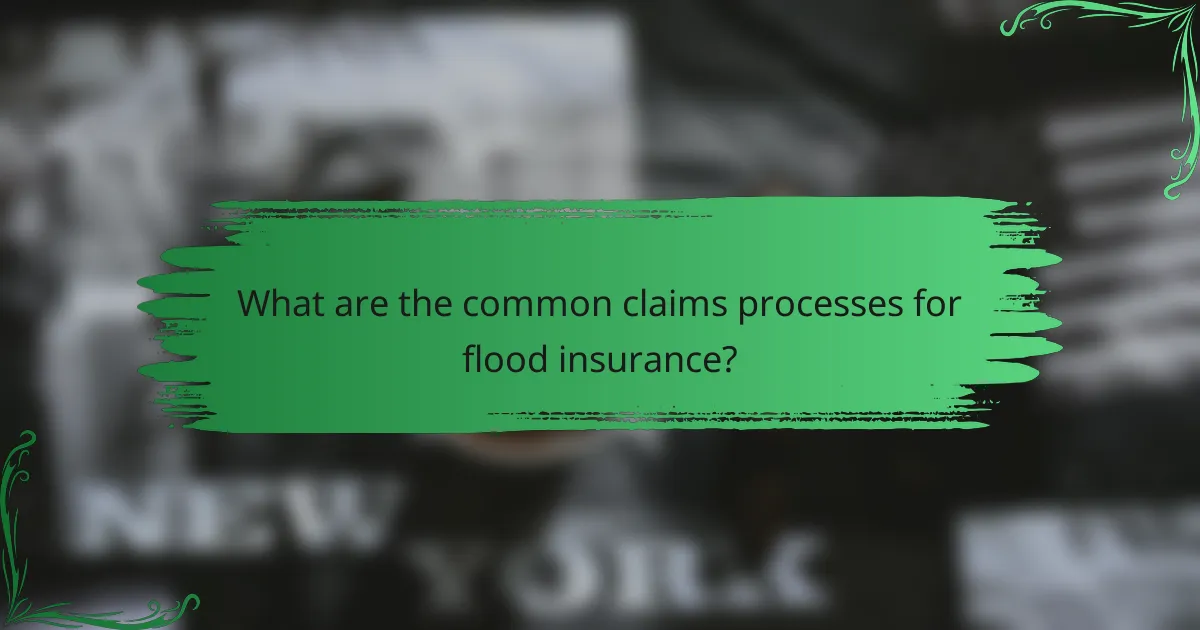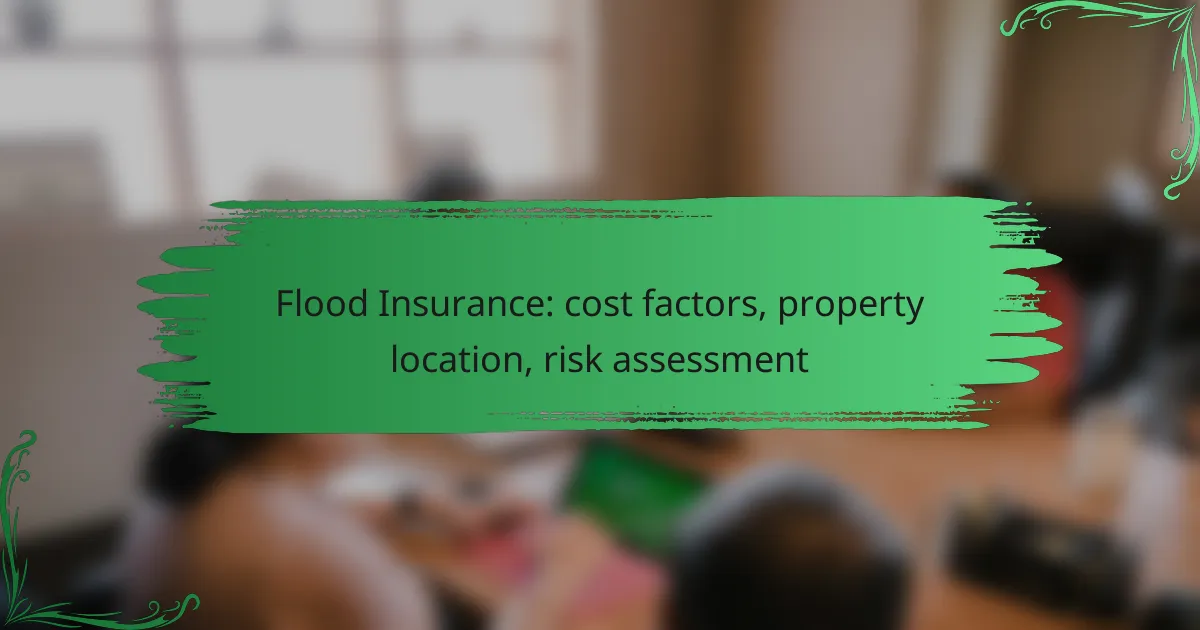Flood insurance costs in the UK can vary widely based on factors such as property location and risk assessment. Homeowners may face premiums ranging from a few hundred to several thousand pounds annually, influenced by elements like flood zone classification and building materials. Understanding these factors is crucial for property owners to anticipate costs and make informed decisions about their coverage.

How much does flood insurance cost in the UK?
The cost of flood insurance in the UK can vary significantly based on several factors, including property location and risk assessment. Generally, homeowners can expect to pay anywhere from a few hundred to several thousand pounds annually, depending on their specific circumstances.
Average premium rates
On average, flood insurance premiums in the UK range from approximately £200 to £1,000 per year. Properties in high-risk flood zones tend to incur higher premiums, while those in lower-risk areas may see more affordable rates. It’s essential to compare quotes from different insurers to find the best coverage for your needs.
Factors affecting cost
Several key factors influence the cost of flood insurance, including the property’s location, the level of flood risk, and the type of coverage selected. Homes situated in designated flood zones typically face higher premiums due to the increased likelihood of flooding.
Other considerations include the property’s construction type, its elevation, and any previous flood claims. Insurers may also assess the proximity to water bodies and drainage systems when determining risk levels.
Discounts and subsidies available
Homeowners may qualify for various discounts and subsidies that can help reduce flood insurance costs. For instance, the UK government offers the Flood Re scheme, which provides affordable insurance for properties at high risk of flooding, particularly for those built before 2009.
Additionally, implementing flood resilience measures, such as installing barriers or flood-proofing the property, can lead to lower premiums. It’s advisable to inquire with insurers about available discounts when obtaining quotes.

What factors influence flood insurance premiums?
Flood insurance premiums are influenced by several key factors, including property location, building materials, and flood zone classification. Understanding these elements can help property owners anticipate costs and make informed decisions about coverage.
Property location
The geographical location of a property plays a significant role in determining flood insurance premiums. Properties situated in flood-prone areas, such as near rivers or coastlines, typically face higher premiums due to increased risk. Conversely, homes located on higher ground or in regions with lower flood risk may enjoy more affordable rates.
Local climate and historical flooding patterns also impact premiums. For instance, areas that have experienced severe flooding in the past may see higher insurance costs, reflecting the ongoing risk associated with those locations.
Building materials
The materials used in a property’s construction can affect flood insurance premiums. Homes built with flood-resistant materials, such as concrete or steel, may qualify for lower rates compared to those made from wood or other susceptible materials. Insurers often assess the durability and resilience of the building when calculating premiums.
Additionally, features like elevated foundations or flood vents can further reduce insurance costs. Property owners should consider these aspects when constructing or renovating their homes to potentially lower their flood insurance expenses.
Flood zone classification
Flood zone classification is a critical factor in determining flood insurance premiums. Properties are categorized into different flood zones based on their risk levels, with zones A and V representing high-risk areas. Homes in these zones generally face higher premiums due to the increased likelihood of flooding.
In contrast, properties in lower-risk zones, such as B, C, or X, may qualify for reduced rates or even exemption from mandatory flood insurance requirements. Understanding your flood zone classification can help you gauge potential insurance costs and make informed decisions about coverage options.

How is risk assessed for flood insurance?
Risk assessment for flood insurance involves evaluating various factors that contribute to the likelihood of flooding in a specific area. Insurers analyze data on property location, historical flood events, and local climate conditions to determine the risk level and set appropriate premiums.
Risk assessment models
Risk assessment models use statistical methods to predict flood risks based on various inputs. These models often incorporate geographic information systems (GIS) to analyze topography, land use, and hydrology. Insurers may employ different models, leading to variations in risk ratings and premiums across providers.
Commonly used models include the Federal Emergency Management Agency’s (FEMA) Flood Insurance Rate Maps (FIRMs), which categorize flood zones based on risk levels. Understanding these models can help property owners anticipate their insurance costs and make informed decisions about flood preparedness.
Historical flood data
Historical flood data is crucial for assessing flood risk, as it provides insights into past flooding events in a region. Insurers examine records of flood occurrences, including frequency, severity, and duration, to gauge potential future risks. Areas with a history of significant flooding are typically assigned higher risk ratings.
Property owners can access historical flood data through local government agencies or online databases. This information can help them understand their vulnerability and consider additional protective measures, such as flood barriers or elevation adjustments.
Local climate conditions
Local climate conditions significantly influence flood risk assessments. Factors such as rainfall patterns, temperature fluctuations, and seasonal changes can affect the likelihood of flooding in a given area. Regions prone to heavy rainfall or rapid snowmelt are often at higher risk.
Additionally, climate change is altering weather patterns, potentially increasing flood risks in previously safe areas. Homeowners should stay informed about local climate trends and consider how these changes may impact their flood insurance needs and property safety measures.

What are the benefits of flood insurance?
Flood insurance provides essential financial protection against damages caused by flooding, which is often not covered by standard homeowners insurance. It helps homeowners recover from losses and rebuild their lives after a flood event.
Financial protection
Flood insurance offers significant financial protection by covering repair costs for your home and personal belongings. Depending on your policy, it can cover structural damage, replacement of appliances, and even temporary housing expenses while repairs are underway.
For instance, a typical flood insurance policy might cover losses up to $250,000 for the structure and $100,000 for personal property. This can save homeowners from incurring substantial out-of-pocket expenses in the event of a flood.
Peace of mind
Having flood insurance provides peace of mind, knowing that you are financially safeguarded against potential flood damage. This assurance can alleviate stress, especially for those living in flood-prone areas.
With flood insurance, homeowners can focus on recovery and rebuilding rather than worrying about the financial implications of a flood. This mental relief is invaluable during challenging times.
Compliance with mortgage requirements
Many lenders require flood insurance for properties located in designated flood zones as a condition of the mortgage. This requirement ensures that both the lender and the homeowner are protected against potential losses.
Failing to secure flood insurance when required can lead to penalties or even foreclosure. Homeowners should check with their mortgage provider to understand specific requirements related to flood insurance and ensure compliance.

How to choose the right flood insurance policy?
Selecting the right flood insurance policy involves understanding your coverage needs, assessing your property’s risk, and comparing different options. Consider factors such as location, policy limits, and potential exclusions to ensure comprehensive protection against flood damage.
Coverage options
Flood insurance typically offers two main types of coverage: building property coverage and personal property coverage. Building property coverage protects the structure of your home, while personal property coverage safeguards your belongings inside the home. Depending on your needs, you may want to opt for one or both types.
Additionally, some policies may offer additional living expenses coverage, which helps pay for temporary housing if your home becomes uninhabitable due to flooding. Review the specific coverage options available to ensure they align with your situation.
Policy limits
Policy limits refer to the maximum amount your insurance will pay for a covered loss. For building property coverage, limits often range from tens of thousands to several hundred thousand dollars, while personal property coverage limits may be lower. It’s essential to choose limits that reflect the actual value of your property and possessions.
Keep in mind that if your property is located in a high-risk flood zone, you may want to consider higher limits to fully protect your investment. Consult with your insurance agent to determine appropriate coverage amounts based on your specific circumstances.
Exclusions to consider
Exclusions are specific situations or types of damage that your flood insurance policy will not cover. Common exclusions include damage from moisture, mold, or wear and tear, as well as certain types of flooding, such as those caused by sewer backups unless specifically included in the policy.
It’s crucial to read the fine print of your policy to understand these exclusions. This way, you can take proactive measures to mitigate risks or seek additional coverage for areas that may not be included in your standard flood insurance policy.

What are the common claims processes for flood insurance?
The claims process for flood insurance typically involves notifying your insurer, documenting the damage, and submitting a formal claim. Understanding the steps and required documentation can streamline the process and help ensure you receive the compensation you need.
Steps to file a claim
To file a flood insurance claim, start by contacting your insurance company as soon as possible after the flood event. Most insurers have a dedicated claims hotline or online portal for reporting claims.
Next, an adjuster will be assigned to assess the damage. They will visit your property to evaluate the extent of the loss and determine the payout amount based on your policy coverage.
Finally, after the assessment, submit any required documentation and wait for the insurer to process your claim. This process can take several weeks, so staying in touch with your insurer can help expedite it.
Documentation needed
When filing a flood insurance claim, you will need to provide specific documentation to support your case. Essential documents include a completed claim form, photographs of the damage, and a list of damaged or lost items with their estimated values.
Additionally, you may need to submit repair estimates from licensed contractors and any relevant receipts for repairs or temporary housing expenses. Keeping organized records can significantly aid in the claims process.



